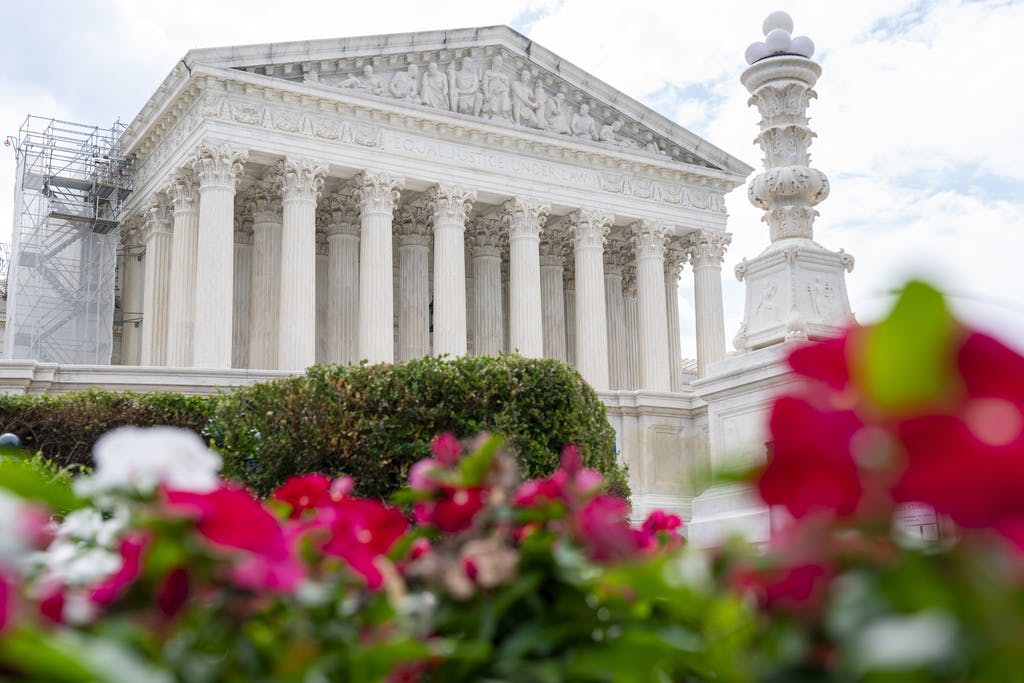Can Trump Say ‘You’re Fired’?
The Supreme Court will wait for the District Court to decide the case that could hamstring the president’s hopes to drain the swamp.

The Supreme Court is, at least for now, siding with a federal employee whom President Trump is trying to fire. Yet in a case that could shed light on whether Mr. Trump will be able to scale back the size of the federal workforce, the high court’s action essentially kicks the can down the road — if only until Wednesday, when a district judge is slated to hear arguments in the case. It denies Mr. Trump a quick win but holds out the possibility of a victory.
The dispute arose when President Trump on February 7 fired an executive branch employee, Hampton Dellinger, who had been hired by President Biden. Mr. Dellinger is, or was, the head of the Office of Special Counsel, a federal office that handles employment disputes in the executive branch. The termination of Mr. Dellinger was “without cause,” per Judge Amy Berman Jackson, the district judge who first heard the case, captioned Bessent v. Dellinger.
Mr. Dellinger argues that federal law shields him from being fired except in cases of what Judge Jackson calls “inefficiency, neglect of duty, or malfeasance in office” — which nobody alleges in this case. The thicket of laws that purport to protect Mr. Dellinger, and other federal employees, include the Civil Service Reform Act of 1978 and the Whistleblower Protection Act of 1989, Judge Jackson said. She put a hold on Mr. Trump’s attempt to fire Mr. Dellinger.
An appeals court upheld Judge Jackson’s pause, prompting Mr. Trump to appeal to the Nine. The high court late Friday declined to lift that hold. Mr. Trump, for his part, argues that the statutory limits on his authority to hire and fire executive branch employees are crosswise with the Constitution. These columns have long endorsed that reading of the parchment, which comports with Article II’s grant of all the executive powers to the president alone.
The high court’s precedents also bolster Mr. Trump’s position in Bessent. In 2020, the court in Seila Law v. Consumer Financial Protection Bureau, found that the heads of executive branch agencies “must be removable by the President at will,” Chief Justice Roberts wrote for the majority. Seila Law also stressed the president’s “authority to remove those who assist him in carrying out his duties,” as Chief Justice Roberts put it in an earlier case.
“Without such power, the President could not be held fully accountable for discharging his own responsibilities,” the Chief Justice explained. “The buck would stop somewhere else.” How, then, could the president fulfill his constitutional duty to “take Care that the Laws be faithfully executed”? That view is echoed by the constitutional watchdogs at the New Civil Liberties Alliance, which urged the court to back Mr. Trump in this dispute.
“The President, as the sole head of the Executive Branch, holds an absolute and unqualified removal authority over Executive Branch officials,” is how the NCLA, headed by Columbia Law’s Philip Hamburger, sees the matter. As a result, the NCLA reckons, “neither Congress nor the Courts have authority to interfere” in Mr. Trump’s decision to terminate Mr. Dellinger — or any other employee of the executive branch, for that matter.
Even so, the Seila Law precedent features a caveat that, if upheld by the Nine’s current lineup, could constrain Mr. Trump’s ambitions to fire thousands of employees across the federal bureaucracy. That caveat affirms Congress’ authority to give “removal protections” to “inferior officers with limited duties and no policymaking or administrative authority.” Such employees, the Nine said, do “not unduly interfere with the functioning of the Executive Branch.”
Will that precedent hold? The question may not arise in the Dellinger dispute due to his position as an agency chief. Yet it is sure to face renewed scrutiny amid the slew of lawsuits testing Mr. Trump’s efforts to reform the leviathan. If Bessent promised “an early clue” about the Nine’s “receptiveness” to those plans, as Bloomberg reported, tonight’s ruling suggests that the path ahead for the president could prove more challenging than he hoped.

